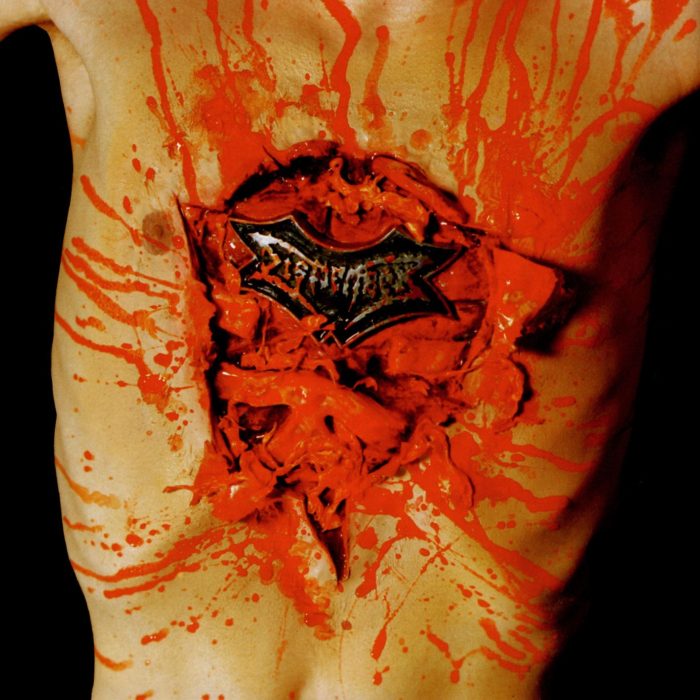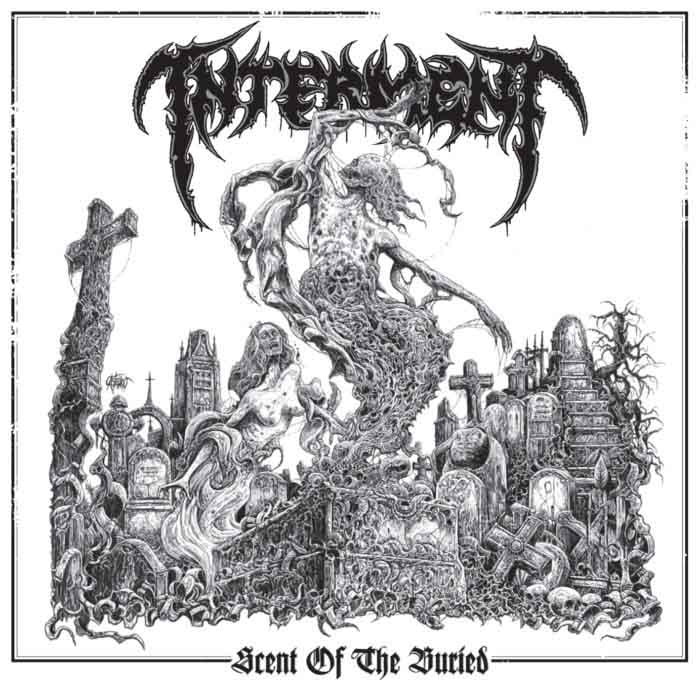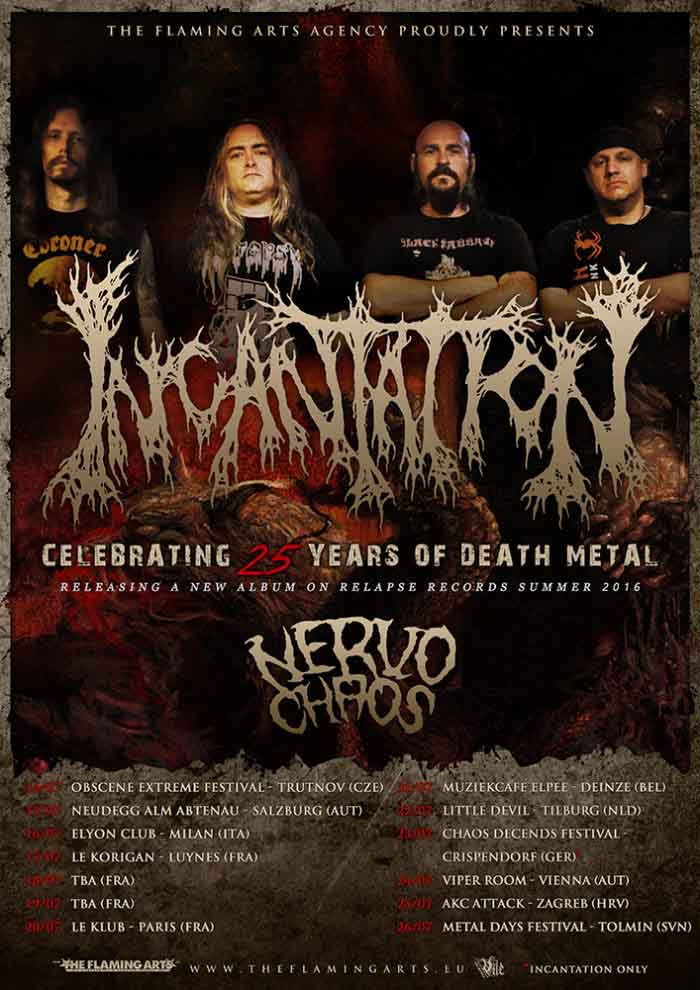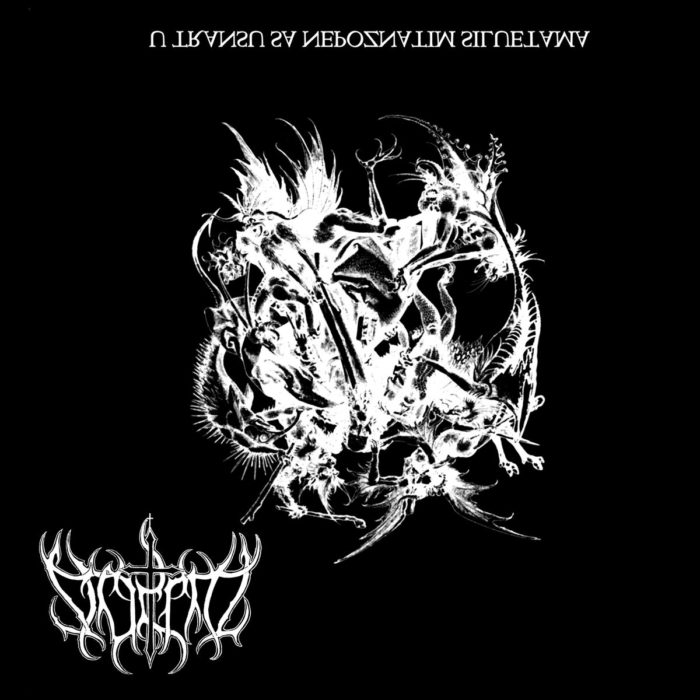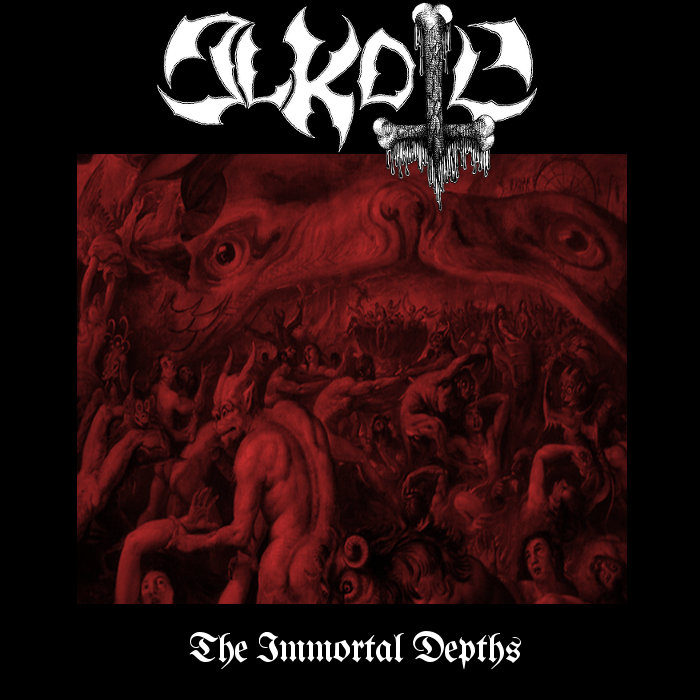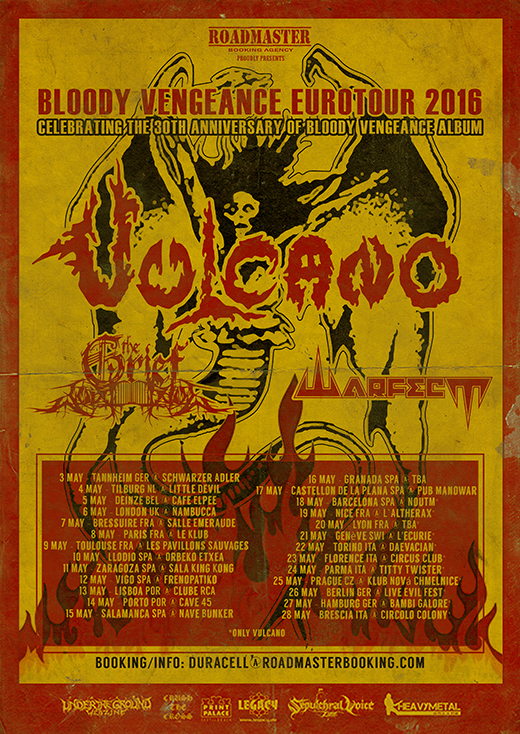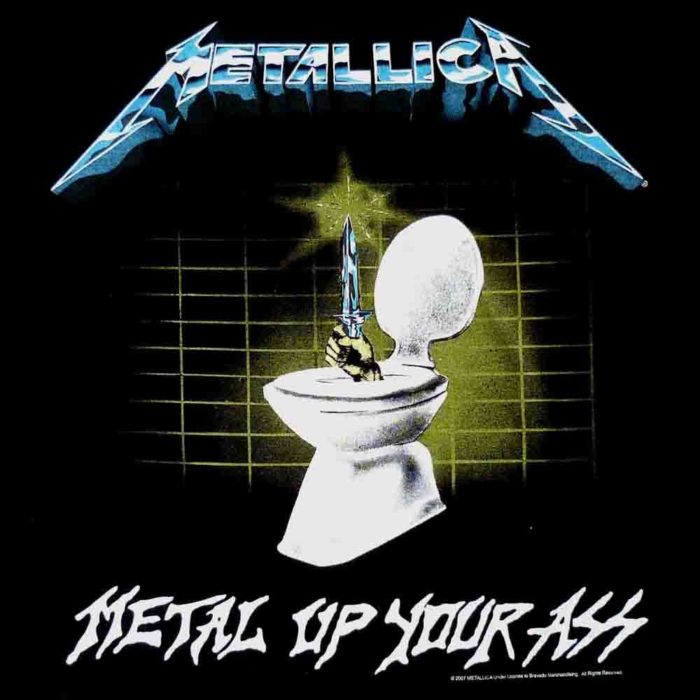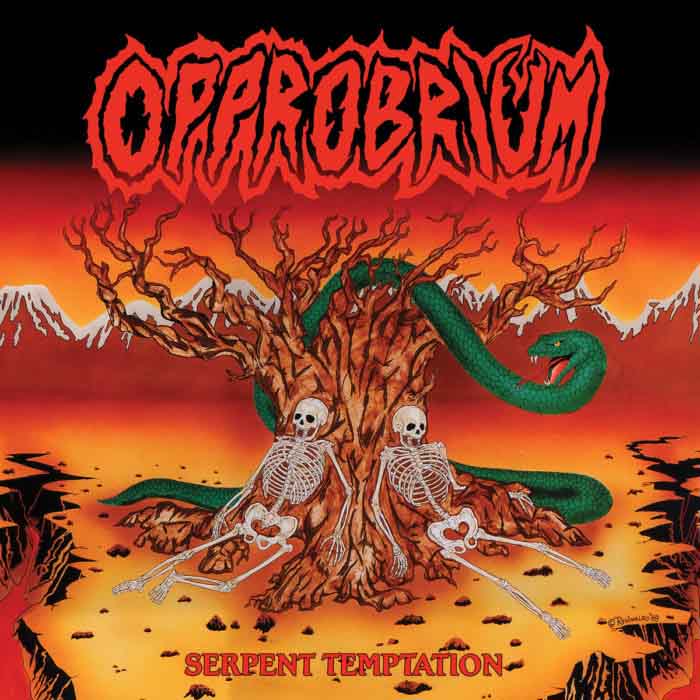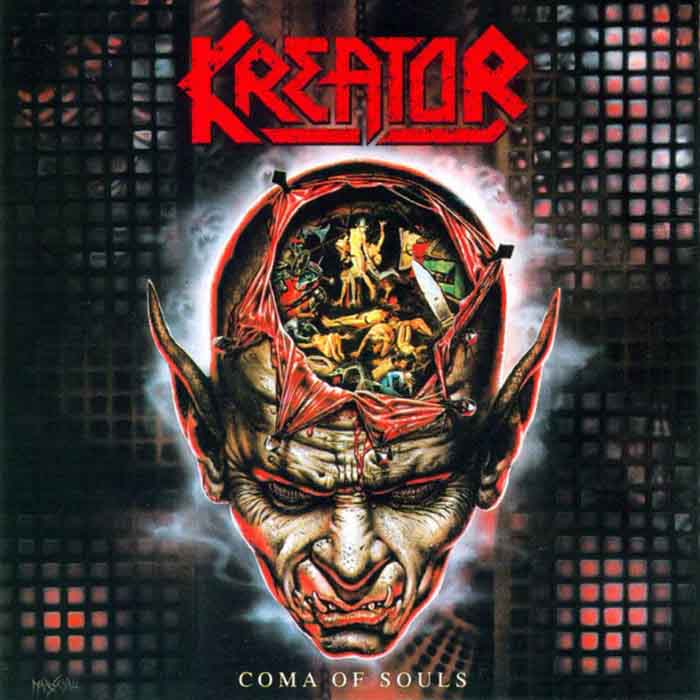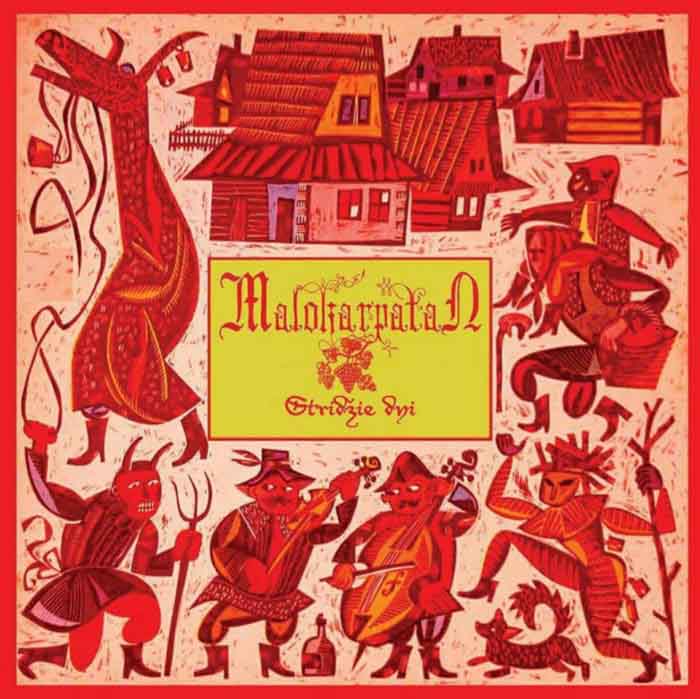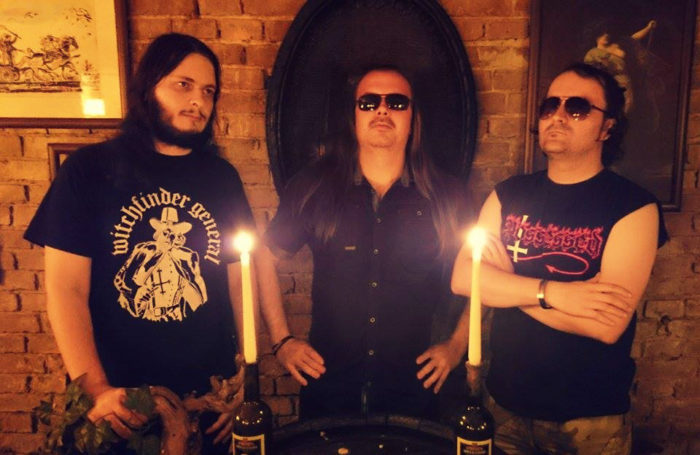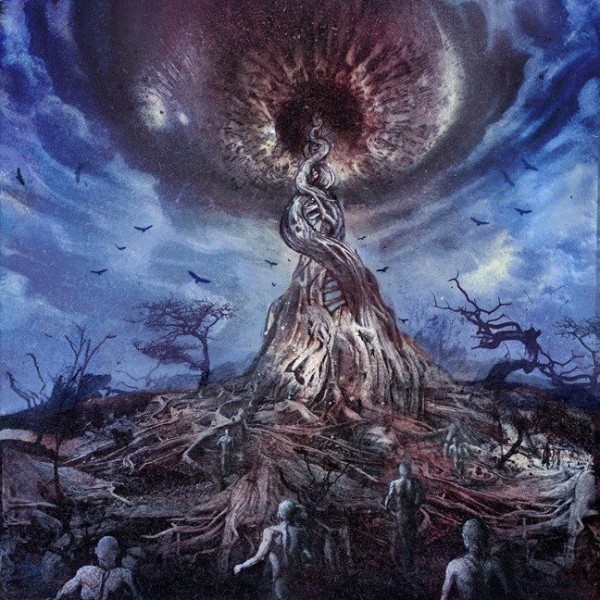Almost all metal bands eventually run out of ideas and revert to imitating their influences or repeating themselves. The former usually results in songs that are Frankenstein’s monster mashups of old ideas hoping to hop across the finish line without their sutures bursting leading to loss of limbs. The latter have no raison d’être beyond releasing the expected new record every eighteen months or so to put a product on the shelves that the label can push and the band can tour to support on a James Bond series type release schedule. Even a teenager saying “I want to kill everyone, drink beer, masturbate, and be as fucking metal as possible” shows more purpose than such aimlessness.
Indecent and Obscene was Dismember proving that in 1993 they had became at least as proficient musicians as their seventies and eighties idols. Dave Blomqvist took over the leader guitar duties from Nicke Andersson and added Mercyful Fate-like sweep-picked leads to the bluesy, Ritchie Blackmore-influenced solos. The songs continued in the vein of filthy Pieces EP with verse chorus verse bashers. The problem was they were slowed down, less distorted, and more lazily constructed: Beneath the Remains Sepultura minus a standard deviation or two in IQ. Every time Dismember play an interesting riff on this album, they allow it to wear out its welcome through repetition in brain-dead pop song structures. That is only when they have a good, counterpointed Carnage/Dismember riff. Most of the rhythm riffs are generic Autopsy riffs; riffs Autopsy stole from Celtic Frost, who stole it from Metallica, who stole it from some NWOBHM band who took it from AC/DC or The Stooges. These riffs were used just so Dismember could construct a basic d-beat song and sweep pick Guitar World readers’ faces off.
Matti Karki sounded just as rabid as ever but in every song sprouted off the title of the song in the chorus of the song as a vocal hook. This is the same as an awful Hollywood action film script containing dialogue saying the name of the movie in the movie, eg: “This is Con Air!” or “You Only Live Twice Mr. Bond!” Idiotic bridges kill off any tension too. “Why don’t you just kill yourself?” followed by breakdown of the main rhythm riff so all the hardcore kids for whom Suffocation was too heavy could slamdance before the air guitarable solo.
Dismember on Indecent and Obscene was Nuclear-Blasted into Cannibal Corpse before Nuclear Blast mandated all their bands sellout into death/black ‘n’ roll for the Bic-flicking festival crowd. While superior to most of the later work out of Sweden, Indecent and Obscene never approaches the transcendent Dark Recollections and Like an Ever Flowing Stream. The only praiseworthy aspects beyond the superficial icing are Fred Estby’s creative tom fills on songs such as “Sorrowfilled”. His underrated percussion is the only part building and resolving tension in these mediocre songs. That’s simply not enough to hold hessian attention. Decent material must still be composed and Dismember didn’t bother writing any worthy of repeated listening here.
14 Comments
Tags: 1993, beer metal, David Blomqvist, death 'n' roll, death metal, Dismember, Fred Estby, Matti Karki, nuclear blast records, pop metal, review, Speed Metal, Swedeath, Sweden, Swedish Death Metal
